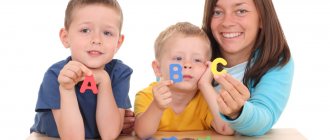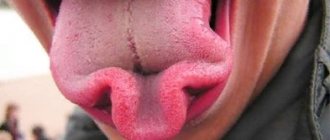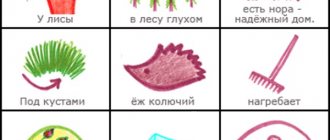Master class No. 4 “Hissing sounds (from production to full introduction to speech)”
- Correct articulation of the sounds Sh, Zh, Ch, Shch.
- Disturbances of hissing sounds.
- Causes of hissing sound disorders.
- Preparing the articulatory apparatus for producing the sound Sh.
- Do I need speech therapy massage?
- What breathing exercises are needed?
- Techniques for producing the sound of Sh.
- The sequence of production of sounds in a group of hissing sounds.
- Correction of softening of sounds Ш, Ж.
- The role of parents in correcting the child’s sound pronunciation.
- Training on automating hissing sounds.
Target audience: speech therapists, defectologists, students of defectology departments, parents
Venue: st. Kolskaya, 2, bldg. 4, 3rd floor
See the calendar for dates and times
Cost: 2000 rubles, for legal entities + 50% - 3000 rubles.
The number of places in the group is limited! Enrollment in the group is only after making an advance payment.
Upon completion, a certificate of advanced training is issued - 8 hours
Inquiries and appointments by phone: (925) 585-49-35 (Viber, WhatsApp), or in our calendar
The seminar is not broadcast online.
Patterns of normal speech development according to A. N. Gvozdev
The proposed scheme is based on the peculiarities of the appearance of parts of speech and grammatical categories in children. A. N. Gvozdev distinguishes two stages:
- use of amorphous words;
- mastery of grammatical categories.
When constructing correctional work, speech therapists rely on these patterns of ontogenetic speech development.
Amorphous root words
A. N. Gvozdev begins to consider the acquisition of the native language system from one year and 8 months, when the baby already has his first words. This stage is divided into two sub-periods, each of which has its own characteristics.
- One-word - the baby uses only individual words that act as sentences. Some of them serve to express his desires and feelings. At this time, he actively uses facial expressions and gestures. The first words do not have a clear grammatical form: he uses them in one sound image in different contexts (“bi” - car, driving, etc.).
Most of them are nouns, onomatopoeic complexes and babble. In total, the child’s dictionary during this period contains about 29 such amorphous words. He clearly pronounces vowels, labiolabials, front-lingual, back-lingual, Сь, Ль. The syllabic structure consists of one stressed syllable or two identical ones.
- The second sub-period is characterized by combining words into one phrase, but it is ungrammatical. Indeclinable nouns and verbs appear in the form of the imperative mood (“drink”, “give”, etc.). The syllable structure becomes more complex: the baby learns the pronunciation of two-syllable words. Хь, Ц, И appears, sometimes he may omit a sound at the beginning or end of a word. The baby also masters the pronunciation of consonant clusters that appear in the middle of some words.
During this age period, the prerequisites for the child’s successful mastery of the components of the language system are formed. He begins to use the simplest forms of parts of speech and sounds with simple articulation patterns.
Mastering the grammatical structure of sentences
This long period begins at 1 year 8 months. and lasts up to 6 years. The child masters all grammatical skills; The syllable structure and sound pronunciation are fully formed by the age of 5-6 years. Children are actively engaged in word creation. This phenomenon is caused by attempts to master the norms of the native language without knowing the grammatical rules.
First period
First forms of words (1 year 8 months – 2 years). The baby combines 3-4 words into a sentence. He masters the skill of agreeing a noun in the nominative case with a verb, and the initial signs of adjective subordination appear. Phrase speech itself is characterized by ungrammaticality.
Begins to decline words according to cases (nominative, accusative, prepositional); adds diminutive suffixes; new inflections of verbs appear; often omits prefixes.
During this period, the first adjectives appear, but the child uses them without agreement with the noun. Adverbs and pronouns appear (he speaks about himself in the 3rd person); particles. In three-syllable words the child omits the pre-stressed syllable, but in four-syllable words the syllable structure is most often preserved.
Articulatory structures N, T, D appear. Most of the consonant clusters are replaced by a single phoneme.
Second period
From 2 years to 2 years 6 months. endings are learned and conjunctions are added to sentences. A common mistake is replacing endings and using them within the same meaning. Suffixes, dative and instrumental cases appear. Begins to inflect verbs according to persons and tenses, but can mix gender.
The number of adjectives increases, but when using them, the child violates the norms of agreement. The plural form is used only in the nominative case. Personal pronouns are being learned; adverbs that are used for comparison. More prepositions and complex conjunctions appear.
In complex words, omission of pre-stressed syllables and prefixes is most common. The child often mixes similar phonemes in speech. The sequence of consonants remains unlearned, but he pronounces some groups correctly.
Third period
From 2.6 months By the age of 3 years, the child masters the functional parts of speech. The structure of the sentence becomes more complex, and the skill of subordinating words appears. But the child has not yet mastered the category of gender. Almost all the main case endings have been mastered, but the influence of O is more common in them. Suffixes denoting increase are being mastered.
The child freely uses all forms of reflexive verbs and prefixes. But sometimes he can mix them up. Begins to use coordination skills when constructing sentences. Forms of short participles appear. The child confuses possessive pronouns. Uses prepositions and most conjunctions correctly.
Distortion of syllable structure is rare, most often in unfamiliar words. Articulatory patterns of hissing sounds are formed; the pronunciation of consonant sequences is learned.
The fourth period
At 3-4 years old, agrammatic sentences become less and less common in children’s speech. The child is actively engaged in word creation. The ending -OV continues to influence the declination. Difficulties arise in agreeing neuter adjectives. The comparative degree of adjectives and adverbs, the particle BY, appears. The pronunciation side is fully formed.
Fifth period
The period from 4 to 6 years is characterized by the acquisition of almost all grammatical forms of parts of speech. The child has difficulty making sentences with the word “which”.
The boundaries of all the listed stages are approximate; everything depends on the individual characteristics of the child, on the conditions of the speech environment in which he grows. Thanks to knowledge of the stages of ontogenetic development of speech, it is possible to determine how the process of assimilation of language components proceeds. Taking into account ontogenetic and mental characteristics, speech therapists carry out correctional work.
Master class No. 5 “Sounds L, L, Y (from production to full introduction to speech)”
- Correct articulation of the sounds L, L, Y.
- Violations L, L, J.
- Causes of violations of the sounds L, L, Y.
- Preparing the articulatory apparatus for producing the sounds L, L, J.
- Do I need speech therapy massage?
- What breathing exercises are needed?
- Techniques for producing the sounds L, L, Y.
- Complications when setting the sound of L.
- The role of parents in correcting the child’s sound pronunciation.
- Audio automation training L.
Target audience: speech therapists, defectologists, students of defectology departments, parents
Venue: st. Kolskaya, 2, bldg. 4, 3rd floor
See the calendar for dates and times
Cost: 2000 rubles, for legal entities + 50% - 3000 rubles.
The number of places in the group is limited! Enrollment in the group is only after making an advance payment.
Upon completion, a certificate of advanced training is issued - 8 hours
Inquiries and appointments by phone: (925) 585-49-35 (Viber, WhatsApp), or in our calendar
The seminar is not broadcast online.
Master class No. 3 “Whistling sounds (from production to full introduction to speech)”
- Correct articulation of the sounds S-S, Z-Z, Ts.
- Whistling sound disorders.
- Causes of whistling sound disorders.
- Preparing the articulatory apparatus for producing the sound C.
- Do I need speech therapy massage?
- What breathing exercises are needed?
- Sound production techniques S.
- The sequence of sounds in a whistling group.
- Why is interdental sigmatism so poorly corrected?
- Correction of softening of sounds S, Z, C.
- The role of parents in correcting the child’s sound pronunciation.
- Training on automation of whistling sounds.
Target audience: speech therapists, defectologists, students of defectology departments, parents
Venue: st. Kolskaya, 2, bldg. 4, 3rd floor
See the calendar for dates and times
Cost: 2000 rubles, for legal entities + 50% - 3000 rubles.
The number of places in the group is limited! Enrollment in the group is only after making an advance payment.
The seminar is not broadcast online.
Upon completion, a certificate of advanced training is issued - 8 hours
Inquiries and appointments by phone: +(925) 585-49-35 (Viber, WhatsApp), or in our calendar





